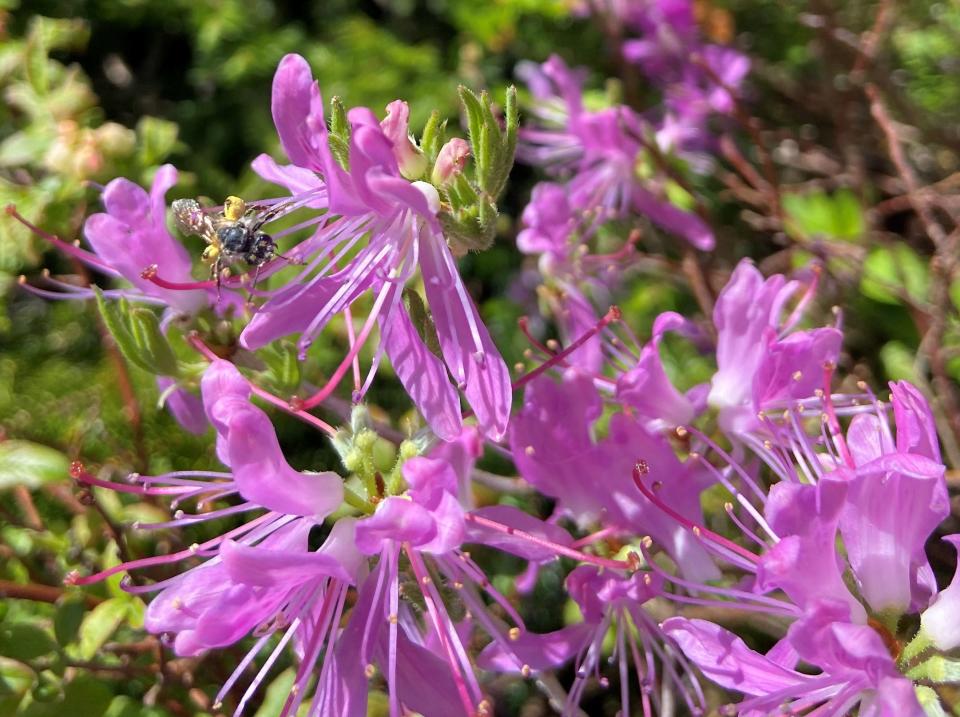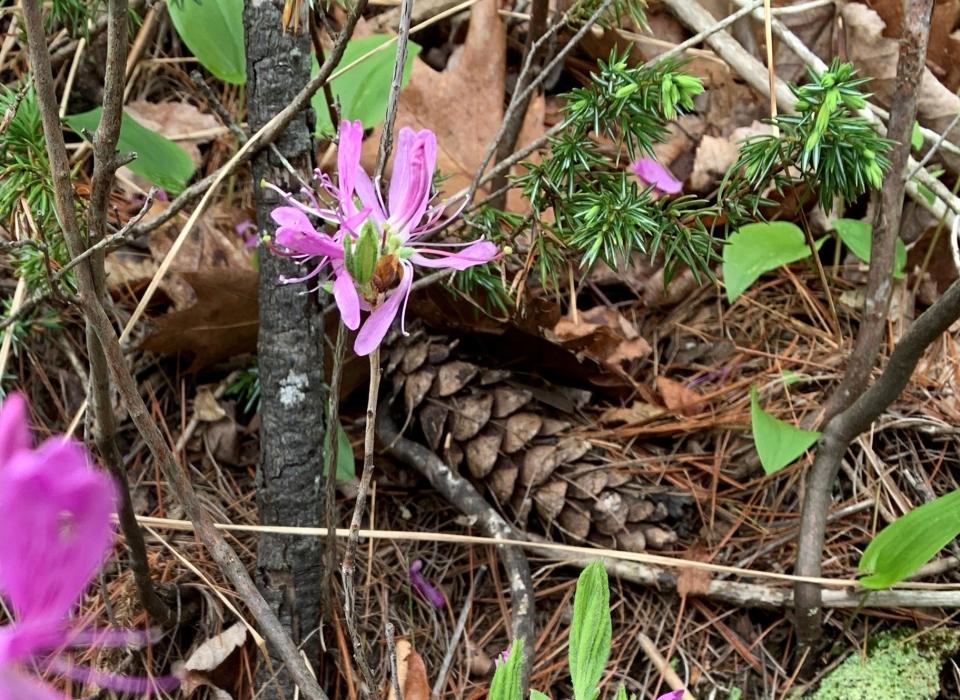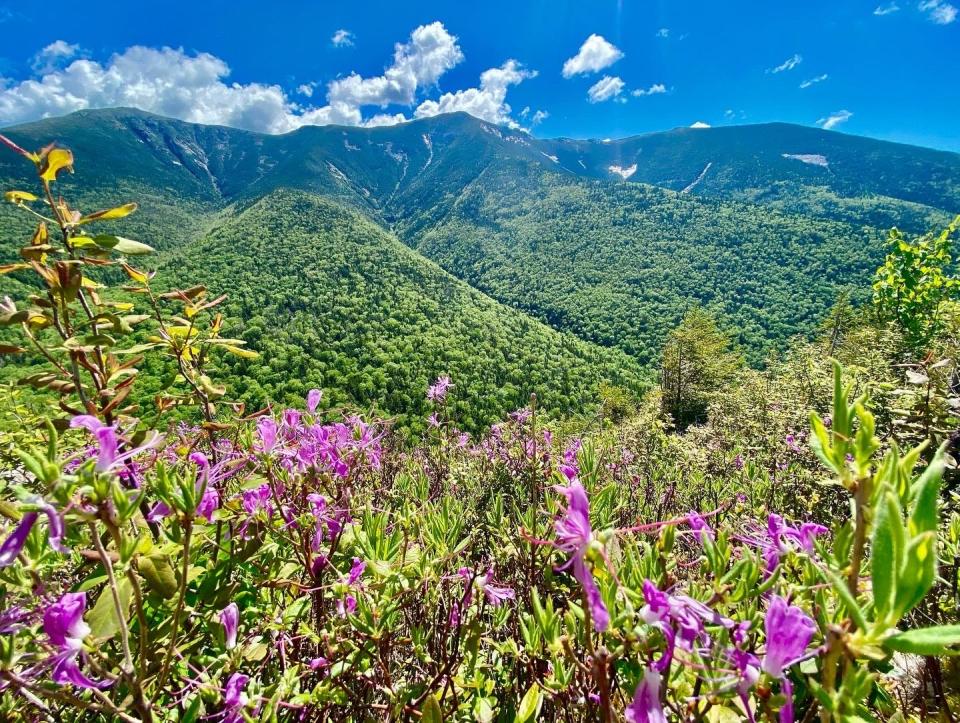'Rival of the rose': Rhodora are blooming now on riverbanks and mountainsides
Back in 1839, Ralph Waldo Emerson wrote the following about rhodora, a flowering shrub native to the Northeast that has one of the most striking flowers to be found in our backyards. The poem is titled “The Rhodora, On being asked, whence is the flower?” It’s short so here it is in its entirety:

“In May, when sea-winds pierced our solitudes, I found the fresh Rhodora in the woods, spreading its leafless blooms in a damp nook, to please the desert and the sluggish brook. The purple petals, fallen in the pool, Made the black water with their beauty gay; Here might the red-bird come his plumes to cool, And court the flower that cheapens his array. Rhodora! If the sages ask thee why this charm is wasted on the earth and sky, tell them, dear, that if eyes were made for seeing, Then Beauty is its own excuse for being: Why thou wert there, O rival of the rose! I never thought to ask, I never knew: But, in my simple ignorance, suppose the self-same Power that brought me there brought you.” Find one and you’ll see why Emerson was so effusive.
Rhodora is a fairly low-growing shrub rarely exceeding three feet in height. I had previously thought of rhodora as a somewhat exotic flowering shrub, found in somewhat exotic locations. I’ve found it growing in lowland wetlands and swamps, and also up in the mountains. I recently found my first flowering rhodora of the season on a riverbank in North Berwick (along the trail of Great Works Regional Land Trust’s Keay Brook Preserve) and then a week later along a trail high up in Franconia Notch.

It turns out it doesn’t need such exotic locales. Rhodora will sometimes even colonize roadside ditches, which often resemble the nutrient-poor, acidic conditions of a bog's edge or high mountainside. You can’t miss it in either place. It has large bright rose-purple blooms that look, to me, exotic due to their long thin petals that stay separate all the way to the base of the flower. Longer still are the sexual parts of the flower - the stigmas, styles and stamens (pollen and nectar-bearing parts) extend out beyond the petals, dangling and waving in the breeze calling “come visit” to all those pollinating insects.
Rhodora are in the heath family, members of the rhododendron genus. I didn’t know rhododendrons were members of the heath family until now. Knowing this connection, I can see the resemblance. Rhododendrons are just gigantic cousins of the often diminutive heaths.
While watching tiny black bees swarming all over the rhodora high up in the mountains, pollen sacs bulging, I realized I wanted to try to grow this in my backyard. In addition to their beauty, they are a great source of nectar for early pollinating insects. It’s also a host plant for the gorgeous, large Columbia silkmoth (Hyalophora columbia).

If interested, you can find plants in specialty garden shops, But, why not try to grow some from seeds collected while out exploring your local bog or hiking in the White Mountains? The Wild Seed Project (wildseedproject.net) has some helpful ideas on how to harvest and germinate the seeds.
I’d suggest, in the same way some folks go bird-watching, try some rhodora watching. It should still be in bloom for another week or so-especially if you travel up to the mountains. As Emerson effuses, this is a rival of the rose and, in my opinion, much more delightful to find because it is often tucked away in difficult to reach places -streambanks, bogs and mountainsides - which only increases the excitement when these beautiful flowers are happened-upon.

Susan Pike, a researcher and an environmental sciences and biology teacher at Dover High School, welcomes your ideas for future column topics. She is looking for readers to send her the signs of spring they're noticing so she can document them on her website pikes-hikes.com. Send your photos and observations to spike3116@gmail.com. Read more of her Nature News columns online at Seacoastonline.com and pikes-hikes.com, and follow her on Instagram @pikeshikes.
This article originally appeared on Portsmouth Herald: Rhodora blooming in Seacoast NH and Maine

